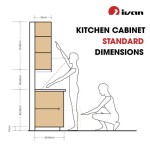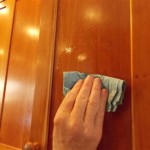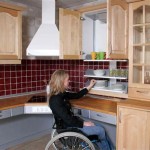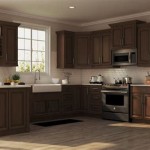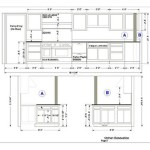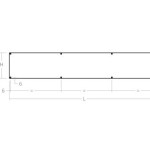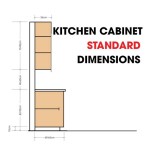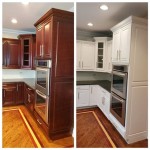How Much Is It To Have Kitchen Cabinets Professionally Painted?
The cost of professionally painting kitchen cabinets is a common concern for homeowners looking to refresh their kitchens without undertaking a full remodel. Painting can dramatically alter the appearance of a kitchen, providing a cost-effective alternative to replacing cabinetry entirely. However, determining the precise expense involves considering various factors, making it essential to understand the components that contribute to the overall price.
Several elements influence the final cost of a professional kitchen cabinet painting project. These can range from the size and scope of the project to the materials used and the complexity of the existing cabinet finish. A thorough assessment of these factors will provide a more accurate estimate of the expected investment.
The following sections will delve into the key determinants of cost, offering a comprehensive overview of what homeowners can anticipate when engaging professional painters for their kitchen cabinet renovation.
Project Scope and Size: Cabinet Count and Dimensions
One of the most significant factors influencing the overall cost is the size and scope of the painting project, directly related to the number of cabinets and their dimensions. A greater number of cabinets naturally requires more labor and materials, leading to a higher overall price. The dimensions of the cabinets, including height, width, and depth, also play a role. Larger cabinets consume more paint and require additional time to prepare and paint than smaller cabinets.
Professional painters typically provide estimates based on either a per-cabinet cost or a total project cost. A per-cabinet estimate might range from $100 to $400 per cabinet door or drawer front, depending on the complexity and detail involved. A total project cost estimate considers all aspects of the work, including preparation, painting, hardware removal and reinstallation, and any necessary repairs. For a small kitchen with fewer cabinets, the total project cost might fall between $1,000 and $3,000. A larger kitchen with an extensive cabinetry system could easily cost between $4,000 and $8,000 or more.
It is important to obtain detailed estimates from multiple painting contractors to compare pricing and understand what is included in each quote. Clear communication about the precise number and dimensions of the cabinets being painted is crucial for accurate cost assessment. This also includes the type of cabinets, such as upper cabinets, lower cabinets, pantry cabinets, and island cabinets, as each might have varying levels of detail and accessibility that can influence the labor time.
Extra features, such as glass-front cabinets, pull-out shelves, or intricate molding, can increase the complexity of the project and thus the cost. Discussing these additional features openly with the painting contractor allows them to factor in the additional time and effort required for the task.
Preparation Work: Surface Condition and Existing Finish
The condition of the existing cabinet surfaces and the type of finish currently applied significantly impact the amount of preparation work required. This preparation is arguably one of the most crucial stages of the painting process, directly influencing the adhesion and longevity of the new paint finish. Inadequate preparation can lead to peeling, chipping, or an uneven appearance, negating the benefits of a professional paint job.
Typical preparation steps include cleaning, degreasing, sanding, repairing imperfections, and priming. Cleaning removes dirt, grime, and grease, ensuring that the paint adheres properly. Degreasing is particularly vital for kitchen cabinets, which are often exposed to cooking oils and residues. Sanding creates a slightly rough surface, promoting better paint adhesion. Repairing imperfections, such as dents, scratches, or chips, ensures a smooth and uniform finish. Priming creates a consistent base for the paint, improving adhesion, hiding imperfections, and enhancing the color.
Cabinets with a heavily varnished, lacquered, or otherwise durable finish will necessitate more extensive sanding and potentially the use of a bonding primer. Bonding primers are specifically designed to adhere to slick or glossy surfaces, providing a stable base for the new paint. The presence of lead-based paint requires special handling and disposal procedures, adding to the costs due to safety precautions and regulatory compliance.
The amount of time spent on preparation directly translates to labor costs. A cabinet surface that requires minimal cleaning and light sanding will be less expensive to prepare than one that needs extensive repair and heavy sanding. Therefore, the initial assessment of the cabinet's condition is essential for accurately estimating the cost of the project.
Cabinet doors and drawers are often removed for painting, which contributes to a more consistent finish. However, if the doors are kept in place, extra care must be taken to protect the surrounding areas, such as countertops, appliances, and walls. This masking and protection also add to the labor involved and, consequently, impact the total cost.
Materials and Paint Quality: Type and Brand
The type and quality of paint and other materials used in the painting project significantly influence the final cost. Choosing high-quality paint and materials will result in a more durable and aesthetically pleasing finish, ultimately increasing the longevity and value of the investment. While cheaper materials may seem attractive initially, they often require more coats, are less resistant to wear and tear, and may not provide the desired color saturation or finish.
The type of paint suitable for kitchen cabinets typically falls into several categories: acrylic latex, oil-based, or enamel. Acrylic latex paints are water-based, low in VOCs (volatile organic compounds), and easy to clean, making them a popular choice for interior projects. Oil-based paints offer exceptional durability and a smooth, glossy finish but require more specialized application techniques, longer drying times, and stricter ventilation due to their higher VOC content. Enamel paints, whether water-based or oil-based, provide a hard, durable finish suitable for high-use areas like kitchen cabinets.
High-quality primers are crucial for ensuring proper paint adhesion and preventing bleed-through from the existing finish. Bonding primers, as mentioned previously, are specifically designed for slick surfaces and offer superior adhesion. Stain-blocking primers prevent stains from seeping through the new paint, maintaining a consistent color. The cost of primers can vary significantly depending on their properties and quality.
Beyond paint and primer, other materials contribute to the overall cost, including sandpaper, cleaning solutions, brushes, rollers, masking tape, drop cloths, and caulking. Professional painters typically use high-quality tools and materials, which contribute to a better finish and may also be factored into the project cost.
The choice of paint finish, such as matte, satin, semi-gloss, or gloss, also plays a role in the overall aesthetic and cost. Glossier finishes are more durable and easier to clean but tend to highlight imperfections. Matte finishes offer a softer look but may be less resistant to staining and wear. The selection of the appropriate finish should be made in consultation with the painting contractor, considering both aesthetic preferences and practical considerations related to durability and maintenance.
The brand of paint also impacts cost. Reputable brands known for their quality, durability, and color consistency often come with a higher price tag. However, investing in a well-known brand can result in a longer-lasting and more visually appealing finish.
Beyond paint, consideration should be given to hardware, such as new knobs and pulls. While not directly part of the painting process, many homeowners choose to update their hardware concurrently with the cabinet painting, contributing to the overall cost of the kitchen refresh.
Therefore, the selection of appropriate materials directly impacts the final result. The choice of paint and primer should be considered considering quality, durability, and intended application to achieve ideal finish and long lasting result.

Costs To Paint Kitchen Cabinets Diy Vs Hiring Professional Painters

How Much Does It Cost To Paint Kitchen Cabinets Professionally In Novi Mi

Kitchen Cabinet Painting Cost 2024

How Much Does It Cost To Paint Kitchen Cabinets Professionally In Novi Mi

How Much To Paint Kitchen Cabinets Professionally Diy Vs Hire A Pro

How Much To Paint Kitchen Cabinets Professionally Diy Vs Hire A Pro

Cost To Paint Kitchen Cabinets 2024 Data Angi

How Much Does It Cost To Paint Kitchen Cabinets H Painting

Kitchen Cabinet Painting Cost 2024

How Much Does It Cost To Paint Kitchen Cabinets Professionally In Novi Mi
Related Posts

